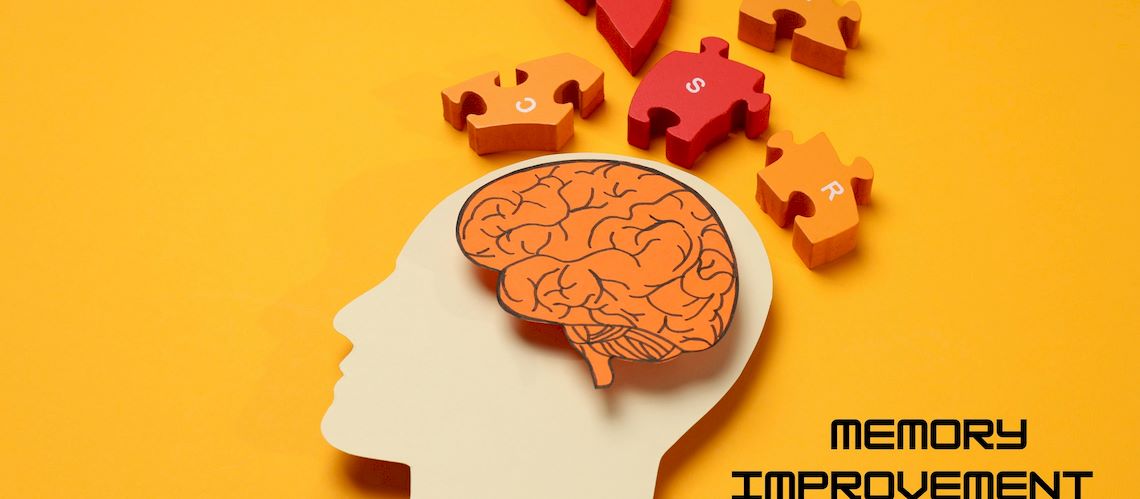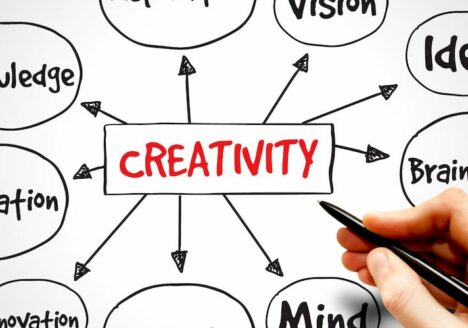Memory improvement is more than a cognitive tool—it’s the foundation of achieving peak mental performance and holistic excellence. Within the Excellence Nexus Framework, memory mastery empowers individuals to excel across its six pillars: Mental Peak, Emotional Peak, Physical Peak, Spiritual Peak, Prosperity Peak, and Impact Peak. By honing memory, individuals can unlock their full potential and achieve transformative growth in every dimension of life.
The Transformative Power of Memory
Consider an entrepreneur, Lisa, who struggles to juggle financial planning, networking, and creative strategy. Despite her talent, Lisa often forgets critical details during pitches or fails to follow up on key action points. Determined to improve, she adopts memory techniques:
- Visualization: She creates vivid mental images to map out her business strategies.
- Spaced Repetition: Lisa uses an app to review key market data over weeks, ensuring it stays fresh.
- Mindfulness: Brief meditation practices help her stay focused and reduce stress before presentations.
The result? Lisa’s confidence soars, her pitches flow seamlessly, and her ability to recall critical data positions her as a leader in her field. Memory mastery transformed Lisa’s career—and it can do the same for anyone willing to practice.
Memory Improvement Across the Six Pillars
1. Mental Peak (Mind Prime)
A resilient, agile mind is critical for achieving mental excellence. Memory techniques build cognitive strength, enabling individuals to think creatively, solve complex problems, and process information with precision.
- Activities:
- Mnemonic devices to encode and organize information.
- Visualization techniques to enhance memory recall.
- Spaced repetition for strategic, long-term learning (Cepeda et al., 2006).
- Purpose:
- Develop mental agility and resilience.
- Boost creativity and problem-solving skills.
- Example:
A medical student mastering human anatomy uses visualization to map the body’s systems and spaced repetition to review material over months. These techniques not only ensure exam success but also prepare them for real-world application in their career (Pressley et al., 1987).
2. Emotional Peak (Heart Prime)
Emotional resilience is foundational to excellence. Memory improvement techniques, coupled with mindfulness practices, help manage stress and enhance emotional regulation.
- Activities:
- Mindfulness meditation to improve focus and memory consolidation.
- Journaling to process emotions and reflect on experiences.
- Purpose:
- Reduce cognitive stress and foster emotional balance.
- Strengthen the connection between memory and emotional intelligence.
- Example:
An executive managing high-pressure deadlines practices daily mindfulness to lower stress and improve memory retention. Over time, they recall details with greater clarity during meetings and handle challenges with poise, earning respect from colleagues (Roediger and Karpicke, 2006).
3. Physical Peak (Body Prime)
Physical activity directly impacts brain health, enhancing memory and preventing cognitive decline. Combining exercise with cognitive training creates a powerful synergy for achieving physical and mental excellence.
- Activities:
- Aerobic exercise, such as running or swimming, to increase blood flow to the brain.
- Cognitive games, like puzzles and strategy tasks, to sharpen memory and focus.
- Purpose:
- Enhance cognitive vitality through physical and mental stimulation.
- Protect against age-related memory decline.
- Example:
A retired athlete integrates morning runs with brain-training apps. This routine improves their focus and memory, enabling them to transition into coaching with clarity and confidence (Chandler and Sweller, 1991).
4. Spiritual Peak (Soul Prime)
Memory supports spiritual growth by deepening self-awareness and fostering meaningful reflection. Through meditative and reflective practices, individuals can process experiences and cultivate inner peace.
- Activities:
- Reflective journaling to capture insights and spiritual reflections.
- Meditation practices focused on gratitude and mindfulness.
- Purpose:
- Strengthen introspection and spiritual understanding.
- Enhance memory clarity for personal growth.
- Example:
An artist uses gratitude journaling to reflect on life’s milestones and meditation to connect with their creative vision. These practices sharpen memory while fostering a deep sense of purpose and fulfillment (Cepeda et al., 2006).
5. Prosperity Peak (Wealth Prime)
Memory improvement supports financial success by enhancing planning, strategy, and decision-making skills. Effective memory techniques help individuals stay organized and recall critical information.
- Activities:
- Visualization to map financial goals.
- Spaced repetition to track key market data or strategies.
- Purpose:
- Optimize financial planning and productivity.
- Strengthen decision-making capabilities.
- Example:
An investor uses spaced repetition to study market trends and visualization to strategize portfolio goals. By improving recall and focus, they make informed decisions that yield consistent returns (Foer, 2012).
6. Impact Peak (Impact Prime)
Leadership and influence require sharp memory and clear communication. Memory techniques enable individuals to retain complex ideas and inspire others through effective engagement.
- Activities:
- Memory palace for organizing speech points or strategies.
- Leadership training with integrated memory exercises.
- Purpose:
- Build confidence and precision in leadership roles.
- Strengthen the ability to retain and apply knowledge for impactful decision-making.
- Example:
A public speaker organizes key points using the memory palace technique. During their speech, they effortlessly recall each idea, delivering a compelling presentation that leaves a lasting impression on their audience (O’Brien, 2020).
The Transformative Benefits of Memory Mastery
- Enhanced Learning and Retention: Spaced repetition and mnemonics improve recall and accelerate knowledge acquisition (Higbee, 2001).
- Improved Cognitive Function: Memory techniques strengthen critical thinking and creativity (Horsley, 2013).
- Increased Productivity: Effective memory practices streamline task management and professional performance (Foer, 2012).
- Holistic Excellence: Memory mastery enhances personal, professional, and spiritual growth, fostering balance across all pillars of the Excellence Nexus.
Practical Steps to Master Memory
- Identify Your Focus: Align memory practices with the pillars most relevant to your goals, such as Emotional Peak for stress management or Prosperity Peak for financial planning.
- Design a Routine: Combine techniques like visualization, spaced repetition, and mindfulness into a personalized practice.
- Be Consistent: Dedicate time daily or weekly to practicing memory techniques.
- Evaluate and Adjust: Track your progress and refine your approach to ensure steady improvement.
Scientific Evidence Supporting Memory Techniques
- Spaced Repetition: Strengthens neural pathways for long-term retention (Cepeda et al., 2006).
- Retrieval Practice: Enhances understanding and reinforces memory (Roediger and Karpicke, 2006).
- Cognitive Load Management: Improves focus and retention by simplifying complex tasks (Chandler and Sweller, 1991).
- Mindfulness: Reduces stress, enhancing both memory and emotional resilience (McGaugh, 2000).
Conclusion
Integrating memory improvement techniques into the Excellence Nexus Framework transforms personal potential into peak performance. By mastering memory, you unlock the ability to think clearly, connect deeply, and act decisively in every dimension of life. Whether sharpening your mind, managing emotions, enhancing physical vitality, fostering spiritual growth, achieving financial success, or creating lasting impact, memory mastery is the cornerstone of excellence. Begin today, and take the first step toward a life of unparalleled achievement.
References:
Cepeda, N. J. et al. (2006) Distributed practice in verbal recall tasks: A review and quantitative synthesis. Psychological Bulletin, 132(3), pp. 354–380.
Chandler, P. & Sweller, J. (1991) Cognitive Load Theory and the Format of Instruction. Cognition and Instruction, 8(4), pp. 293–332.
Foer, J. (2012) Moonwalking with Einstein: The Art and Science of Remembering Everything. Penguin Publishing Group.
Higbee, K. L. (2001) Your memory: how it works and how to improve it. New York: Marlowe & Co.
Horsley, K. (2013) Unlimited Memory: How to Use Advanced Learning Strategies to Learn Faster, Remember More and Be More Productive.
Kwik, J. (2020) Limitless: Upgrade Your Brain, Learn Anything Faster, and Unlock Your Exceptional Life. Hay House.
Lorayne, H. & Lucas, J. (2012) The Memory Book: The Classic Guide to Improving Your Memory at Work, at School, and at Play. Random House Publishing Group.
McGaugh, J. L. (2000) Memory—a century of consolidation. Science, 287(5451), pp. 248–251.
O’Brien, D. (2020) Quantum Memory Power: Learn to Improve Your Memory with the World Memory Champion!. Gildan Media LLC aka G&D Media.
Pressley, M. et al. (1987) The Development of Good Strategy Use: Imagery and Related Mnemonic Strategies. In: Mark A. McDaniel & Michael Pressley (eds.) Imagery and Related Mnemonic Processes: Theories, Individual Differences, and Applications. New York, NY: Springer, pp. 274–297.
Roediger, H. L. & Karpicke, J. D. (2006) The Power of Testing Memory: Basic Research and Implications for Educational Practice. Perspectives on Psychological Science, 1(3), pp. 181–210.




